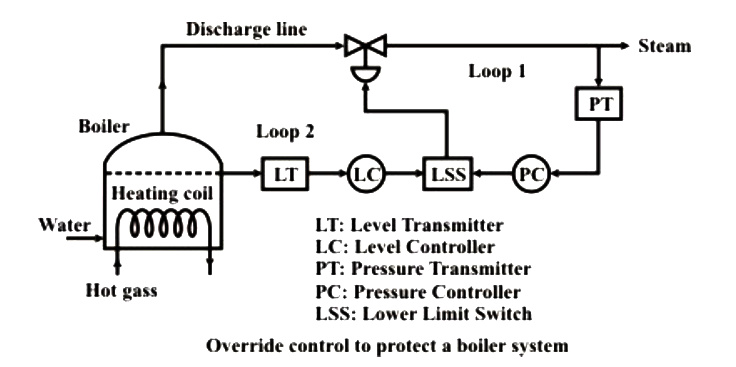In several processes, there may be a single manipulating variable and several output variables. So the control loop should monitor more than just one control variable.
Override control (or a selective control, as it is sometimes called), is a special type of multivariable control, where the manipulating variable is controlled by one output variable at a time.
Normally only one of the output variables is controlled; but it has also to be ensured that the other output variables do not cross the safe limits. If it is so, a second controller takes over the controller through a selector switch.
This can be achieved by using “High Selector Switch” (HSS) or a “Low Selector Switch” (LSS) as required. HSS is used when it is desired that a variable should not exceed an upper limit. Similarly the LSS.
Let us consider a simple example of override control. Consider a boiler system shown in Fig. Under normal circumstances, the steam pressure of the boiler is controlled by controlling the flow through the discharge line.
The pressure is maintained through the pressure transmitter and the pressure controller. But the water level of the boiler should also not fall below a specified lower limit, which is necessary to keep the heating coil immersed in water and thus preventing the burning out.
This can be achieved by using override control through the lower limit switch (LSS). Under normal circumstances, the selector switch selects the pressure control loop for control; but as soon as the level of water falls below a set value, the selector switch switches to level control mode and the second loop takes over the control action.
Reference : NPTEL
